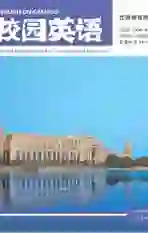The Great Mother Archetypal Image in Mrs. Ramsay of To the Lighthouse
2016-06-07宋昕
宋昕
【Abstract】Idioms, which contain abundant cultural contents and profound truths, are known as one of the features of Chinese. And schemata refer to the knowledge and experience in human brain. The differences of cultural schemata will bring about difficulties and challenges to translation. Through an analysis of the translation strategies in Jenners Journey to the West, this paper is aimed to find out in different cultural schemata what translation strategies the translator will adopt to activate or adjust the cultural schemata in readers brain so as to help them solve the problems of cultural factors during their reading.
【Key words】Journey to the West; cultural schemata; translation strategies
Languages is a very important component of culture, and also the carrier of culture. Each language carries the centuries-old histories and deep-rooted cultures of one nation. On account of the divergent cultural backgrounds, people from different countries form their own distinctive cultural schemata. And the divergent of cultural schemata will lead to difficulties in the translation of idioms. As one of the Chinese classics, there exist tremendous idioms in Journey to the West, which on the one hand enrich the linguistic features of the literary work, and on the other hand add cultural atmosphere to the work. Therefore, the researches on idioms in Journey to the West is beneficial to our understanding of the inherent meaning of the work, and the appropriate translation of idioms can help readers overcome difficulties caused by cultural diversity.
1. Cultural Schema Theory
In 1932, British psychologist Barlett put forth that schema is “an active organization of past reactions operation in any well-adapted or experiences which must always be supposed to be organic response”. Bartlett found when readers tried to understand new objects or knowledge, their memories and understandings would be changed as time went on so as to make adjustments to their own schema. Afterwords, scholars made a further study on schema theory. The modern schema theory regards schemata as the foundation of cognition. It is the existed schemata in our brain that decide our comprehension of new knowledge. Only when the input information is identical to those schemata can readers understand the new knowledge. The cultural schemata covers all background knowledge related to cultures, including customs, religions, histories, geography etc. Generally, it can be divided into three categories, i.e., the overlapped, the divergent and the vacant cultural schemata.
2. Translation Strategies of Idioms
2.1 The Overlapped Cultural Schema
Because there are more or less some similarities in the natural environment or social environment of different nations, some similar cultural schemata then come into being, which will lead to the overlapped cultural schemata in the cross-cultural communication.
e.g.1: 污言秽语(24, 202)
Jenners: filthy and stinking abuse(24, 563)
It refers to the bestial words in China. In Western countries there are also such bestial words like “asshole”, “fuck”.
e.g.2: 没精打采(66, 554)
Jenners: be listless(66, 1503)
It is used to describe a person who is out of spirit in China, so does it in Western countries.
e.g.3: 东张西望(68, 569)
Jenners: to stare all around(68, 1547)
Both in China and in Western countries, it means “look around”.
The above examples are idioms of overlapped cultural schemata. All the words represent the same meaning no matter in China or in Western countries. When the translator deals with idioms like this, he translates all the words literally. It shows that when the cultural schemata overlapped between the original text and the readers, literal translation can activate the exited schemata in readers brain. Therefore, literal translation doesnt affect readers understanding of idioms.
2.2 The Divergent Cultural Schemata
The divergent cultural schema refers to the conflicts between two cultures in cross-cultural communication.
e.g. 龙吟虎啸(60, 503)
Jenners: Dragons howled, tigers roared.(60, 1356)
“龙” in China represents “auspiciousness”, “nobility”, “authority” and “power”, while in Western countries “dragon” is a wicked creature, which is a representative of devils. A deviation appears between the cultural schemata in both countries. Jenner chooses “dragon” to translate “龙” may lead readers to activate their schema of “dragon”, which may cause misunderstanding in our Chinese “龙”. Therefore, the translator here had better add an annotation to the idiom to explain the differences between the two cultures so as to adjust readers existed cultural schemata. Then readers can create a new correct schema to better comprehend this idiom.
2.3 The Vacant Cultural Schemata
The vacant schema means there is no similar schema in source language and target language in cross-culture communication.
e.g.1: 犬马之劳(4, 28)
Jenners: to accept ones humble services(4, 79)
This idiom stems form the History of Han Dynasty, which means “to work for the monarch as dogs and horses”. There is no such schema in Western countries. Jenner paraphrases the idiom to activate target readers schemata.
e.g.1: 班门弄斧(64, 639)
Jenners: A beginner tries to show off in front of experts.(64, 1464)
“班门弄斧” is an allusion in China. Jenner here chooses to freely translate the term in order to express its connotation instead of its literal meaning.
3. Conclusion
From the above analyses, we can see that the translators tries to adopt different translation strategies in different cultural schemata, which can better help readers activate and adjust their cultural schemata to understand the idioms. It implies that the translators should seize the cultural differences between the source text and the target readers when they do the translation. Then they should use appropriate translation strategies based on differences of cultural schemata so that they can set up a bridge to narrow the cultural gaps between the author and the readers.
References:
[1]Bartlett,F.C.Remembering:A Study in Experimental and Social Psychology.Cambridge,England:Cambridge University Press,1932.
[2]Bassnett,Susan,and André Lefevere.Translation,History and Culture.Abingdon:Taylor & Francis e-Library,2003.
[3]吴承恩(Wu Chengen).西游记.长春:时代文艺出版社,1999.
[4]Jenner,W.J.F.Journey to the West.Beijing:Foreign Languages Press,2014.
[5]刘明东.图式在翻译过程中的运用[J].外语教学,2002,(6):56.
